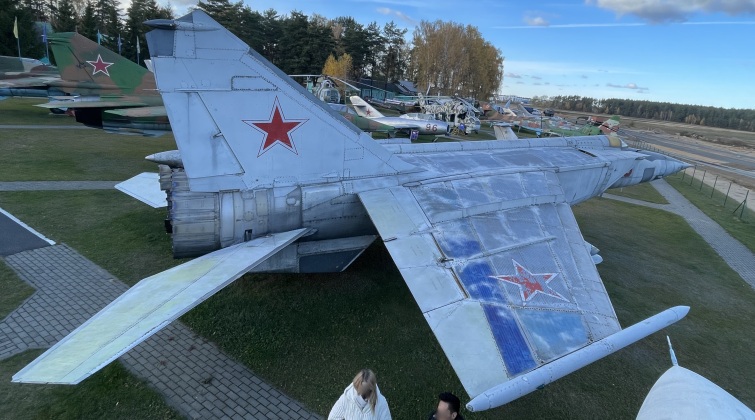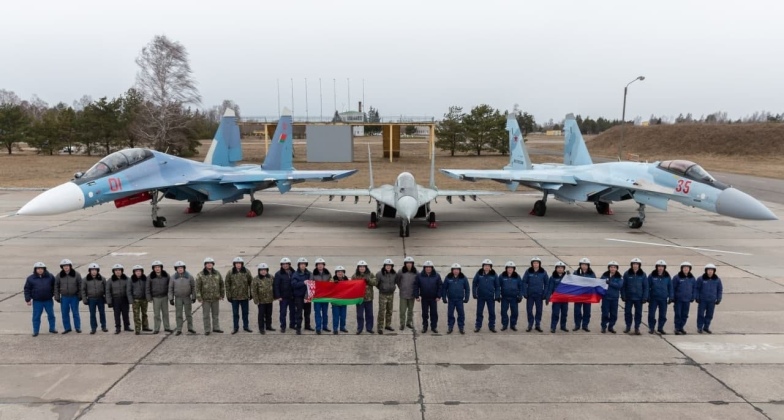The Belarusian Defence Ministry placed its first order in the post-Soviet era for new fighter aircraft in June 2017, with a $600 million contract signed for the acquisition of 12 Su-30SM fighters from neighbouring Russia. The first four of these were delivered in August 2019, with the remaining eight expected to arrive in the country by the end of 2024. This much delayed delivery has been widely reported to be a result of Minsk’s deferrals on payments, as the country has benefited from a growing Russian security umbrella that has reduced the perceived need for costly updates to the fighter fleet. This has included significant deployments of Russian Su-30SMs and more capable Su-35s to Belarusian airfields, as well as S-400 air defence systems and MiG-31K/I strike fighters, while Belarus itself has acquired lower cost assets such as S-400 air defence systems and Iskander ballistic missiles, and gained access to Russian nuclear warheads for the latter. While at least 12 Su-30SMs set to be fielded, and speculation remaining that the fleet could grow to 24 of the fighters, the nature of Belarus’ choice of fighter provides valuable insight into Minsk’s geopolitical situation.
The Belarusian Air Force contracted very significantly after the disintegration of the Soviet Union, with its heaviest tactical combat jets the MiG-25PD/PDS interceptor and MiG-25BM air defence suppression aircraft retired almost immediately, while the Su-27 air superiority fighter and Su-24M strike fighter were full retired the following decade – with the latter then sold to Sudan. Enhanced MiG-23MLDs were also sold to Syria in the 2000s. This left the MiG-29 as the country’s sole fighter class, although the age of the aircraft and conservative nature of the upgrades they received has placed growing pressure on the country to field a successor. While it was long speculated that the country could acquire enhanced MiG-29M or MiG-35 fighters, which have far lower operational costs and significantly superior performances to Soviet built MiG-29s, the country instead acquired the Su-30SM.

The decision to acquire the Su-30SM is thought to have been heavily influenced by the need to maximise compatibility with the Russian Air Force, in which the aircraft forms the backbone of the fleet alongside the more specialised Su-34 strike fighter. Russia is widely reported to have encouraged Soviet successor states to acquire the Su-30SM and offered the aircraft on favourable terms, with Kazakhstan having ordered three squadrons’ worth for a total of 36 aircraft between 2015 and 2023 under five separate contracts, while Armenia acquired four of the fighters in December 2019. The aircraft represents a more versatile and much lower cost alternative to the Su-35 air superiority fighter, and has been compared highly favourably to other ‘4+ generation’ aircraft such as the French Rafale with its range, radar size and manoeuvrability levels far exceeding those of Western fighters.

While the Soviet Union had been scheduled to begin operating fifth generation fighters from 2001, with its first stealth fighter being developed under the MiG 1.42 program, the state’s disintegration meant that Russia would only bring its first fifth generation fighter regiment into service in 2024 – the much less ambitious Su-57. The result has been a much greater reliance both by Russia and by its export clients on enhanced fourth generation fighters like the Su-30SM, which while still retaining a strong edge against European aircraft, suffer from a number of significant disadvantages against fifth generation fighters produced in China and the United States. The retirement of the MiG-25, Su-24M and Su-27 for the lower end but much cheaper MiG-29 after the USSR’s disintegration significant the beginning of a reduced focus on fighter aviation by Belarus, and while the Su-30SM has comfortable superiority over the fighters of neighbouring countries today, this may not remain the case as F-35s proliferate widely across Eastern Europe.
